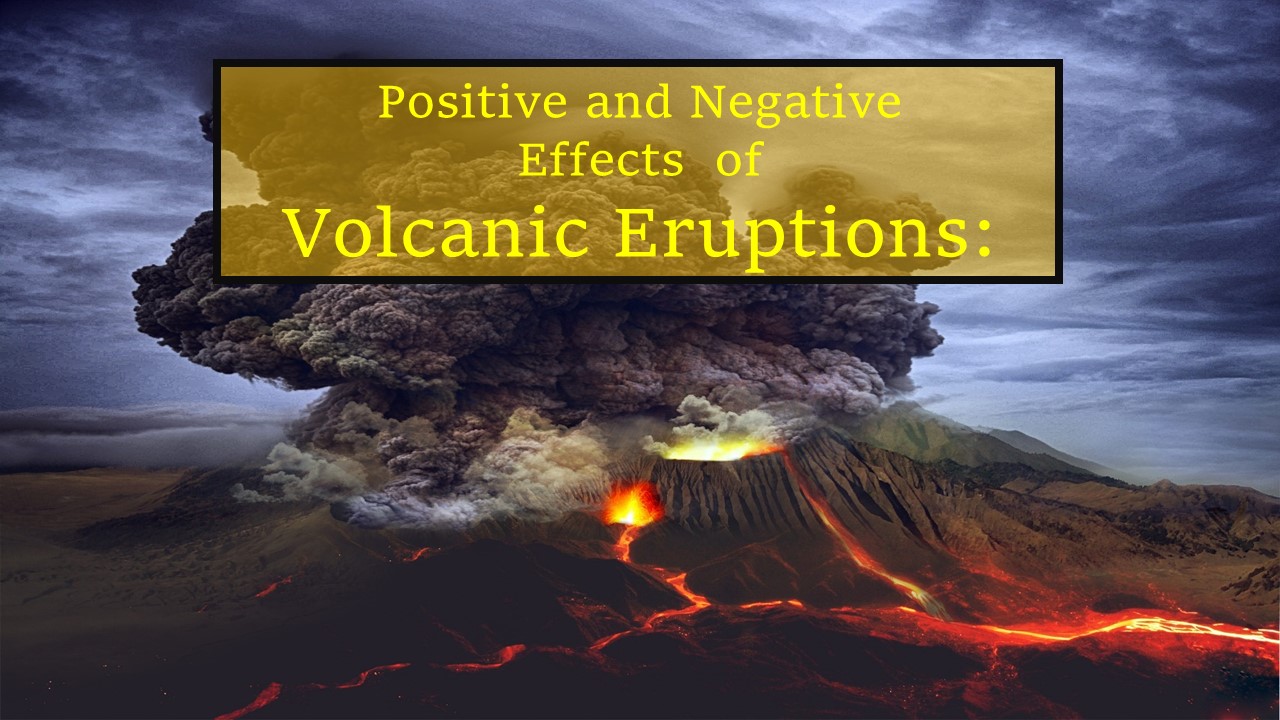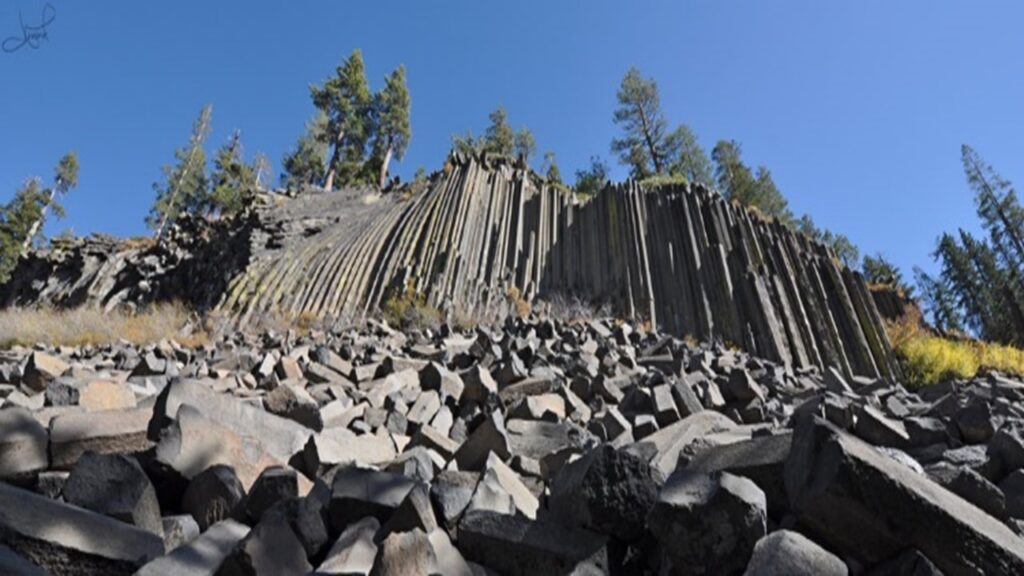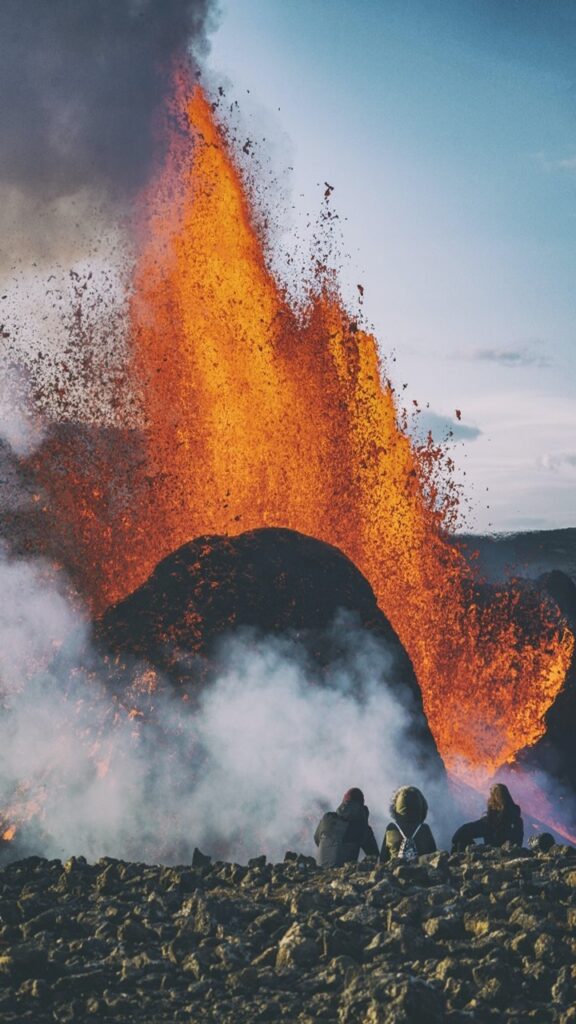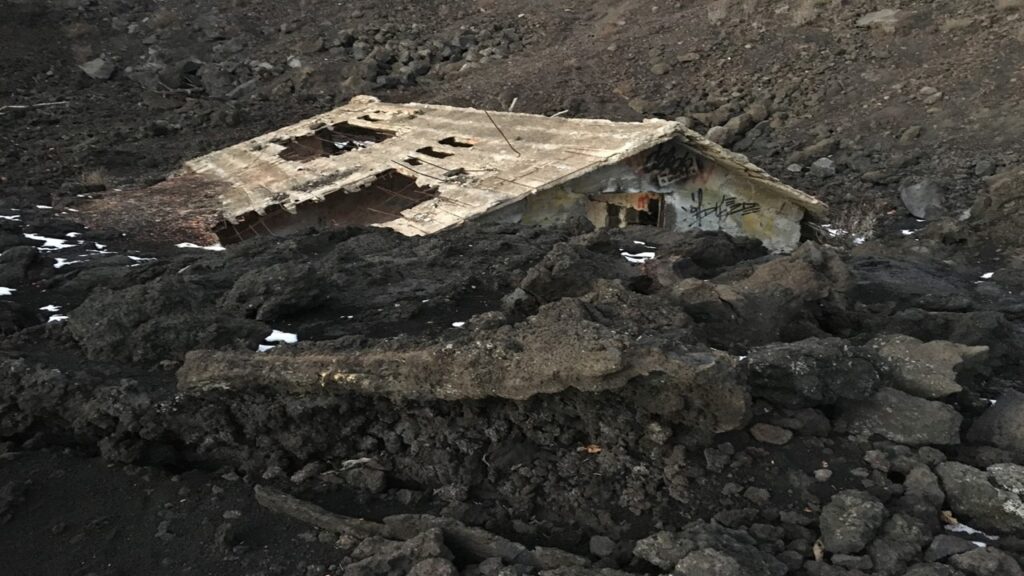Volcanic Eruptions: Positive and Negative Effects

Volcanic eruptions are spectacular natural phenomena. They produce mesmerizing fire fountains, explosive cloud ashes, and splendid lava flows. These hot bursts typically reflect what is happening inside the Earth. Our oceans and atmosphere today are basically a product of volcanic eruptions.
Yet, at the same time, such eruptions can pose serious dangers to human populations. So, in general, volcanic eruptions can have both positive and negative effects.
Positive effects of volcanic eruptions
1. Volcanic eruptions create landscapes
The physical landscape be it on continents, volcanic islands, and the seafloor is largely due to volcanic eruptions. As lava oozes and spurts from volcanoes, it creates distinct landforms. Eventually, weathering and erosion sculpture particular landforms. Thus, they form mountains, hills, plateaus, plains, depressions, caves, and valleys.
Devils Postpile National Monument
Indeed, one such remarkable natural landscape is the Devils Postpile National Monument in California, US. Less than 100,000 years ago, lava cooled and cracked into amazing multi-sided columns of rocks. The sight is one of the finest geological works in the world.

2. Form volcanic islands
One of the most amazing works of underwater volcanoes is that they create volcanic islands. Many islands around the world like Hawaii, Mauritius, the Caribbean Islands are of volcanic origin.
Underwater volcanoes basically erupt below the water’s surface growing taller and taller over time. Eventually, they break the water’s surface forming small islands. Such volcanic activities are ongoing in many regions around the Earth such as Iceland and Indonesia.
As an illustration, Surtsey, a small volcanic island off the southern coast of Iceland emerged from volcanic eruptions. Eruptions began in 1963 building the cone until it finally stopped in 1967 forming a 2.7 km2 island.
3. Volcanic eruptions create fertile soil
As a matter of fact, volcanic eruptions create one of the finest fertile soils. So, following an eruption, lava and tephra solidify into a specific type of rock called basalt. Basalt in fact contains small crystals that easily break down. At the same time, volcanic rocks contain various nutrients and chemicals like iron and potassium that come from magma.
Consequently, the texture and composition of the rocks make the soil excellent for cultivation. In Italy for instance, past eruptions of Mount Vesuvius have covered the nearby regions with tephra. As natural conditions crumbled it into soil, the land is a haven for cultivation. People grow vegetables, fruits, and flowers over every square foot of the rich soil.
Enrich the soil/water
Also, wind carries volcanic ashes and deposit them in agricultural fields and water bodies. In this way, they enrich the soil and water as well. Scientists in fact call volcanic ash nutrient capsules that boost agricultural and aquaculture productivity.
4. Volcano tourism
Volcano tourism is when tourists travel to regions to enjoy views of erupting volcanoes. The captivating lava fountains, glowing flows, and puffy clouds are indeed an uncommon sight. As a result, many people travel to regions where volcanoes are about to erupt to appreciate such sights.
Volcano tourism is now increasing around the world like in Italy, New Zealand, and Iceland, especially as a form of sustainable tourism. Consequently, with more tourists, revenues also increase.
In Iceland for instance, the eruption of the Eyjafjallajökull volcano in 2010 had an interesting impact on tourism. At first, the number of tourists considerably decreased due to the effects of the eruption. But eventually, businesses and services used the majestic eruption to re-boost the tourism industry.
Today still many people from Europe and America particularly fly to Iceland to watch volcanic eruptions like the recent Fagradalsfjall eruption in March 2021.

Negative effects of volcanic eruptions
1. Volcanic eruptions can have a significant effect on our climate
Like all natural hazards, volcanic eruptions can have some serious effects.
One of the most critical impacts is a change in the climate system. Super eruptions release tones of ash particles and smoke into the air. These can travel to the global atmosphere within a matter of weeks to months. They can affect atmospheric circulation leading to a drop in the amount of light that reaches Earth. As a result, the temperature falls and weather conditions change like cooler summers and colder winters.
The change in climate caused by the eruption of Mount Tambora, Indonesia, in 1815 is perhaps the most famous example. It led to a very cold winter in Europe and New England and sea ice migrated across the Atlantic shipping lanes.
2. Volcanic eruptions lead to economic losses
Additionally, volcanic eruptions lead to substantial economic losses. The eruption of the Nevado del Rui in Colombia in 1985 led to economic losses of 1000 million USD.
Lava flows destroy houses, property, infrastructure, and agricultural lands. At the same time, they can damage communication lines and transport systems and hurt people.

All in all, they can bring down various businesses directly and indirectly. Airlines for instance can suffer enormously as planes cannot land nor travel over certain areas. Examples include Alaska’s Redoubt volcano in 1989 and Eyjafalljokull’s eruption in 2010. Dust and ash can block the turbines of aircraft leading to engine failure.
3. People die, are hurt, and can be traumatized
When volcanic eruptions hit human communities, they can indeed be quite damaging. People die, sometimes are hurt for life, and even lose their loved ones. As a result, such events can cause many people, especially children to be traumatized.
Since the 20th century, over 80,000 people have died due to volcanic eruptions. What’s more, throughout our history, eruptions have made at least 300,000 casualties. As it is, 1000 persons on average are victims of volcanic eruptions every year. It includes those who die directly from lava flows and those who die of hunger as eruptions destroy crops.
Lead to health problems
As volcanoes typically release ash particles and smoke when they erupt, it can worsen health problems in individuals with respiratory problems.
4. Volcanic eruptions can have secondary effects like mudflows, tsunamis
As it is, very often, volcanic eruptions can lead to secondary effects like mudflows and tsunamis.
Destructive lahars
When lava mix with water or ice melt, it produces mudflows called lahars. Lahars can be very dangerous as they move very fast destroying everything across their path. Indeed, the Nevado del Ruiz eruption was so catastrophic because of the ice melt that capped the volcano. This unleased three destructive lahars.
Tsunamis
Likewise, volcanic eruptions can trigger tsunamis. Terrestrial eruptions can inject tons of volcanic lahars into lakes and the sea displacing water. Giant tsunamis waves can form as a result. In the same manner, underwater eruptions can displace water leading to tsunamis.
One of the most striking tsunami events due to a volcanic eruption is that of the Krakatau volcano, Indonesia in 1883. Tsunamis waves up to 40 m high reached the coast and washed away 165 coastal villages in the Sundra Strait.
